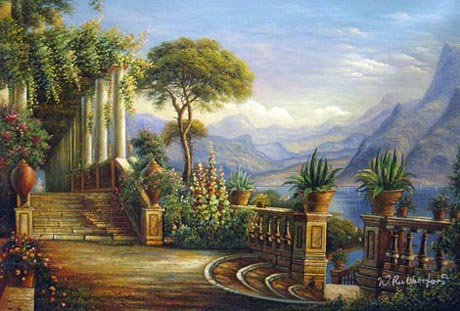The Painting Process
Buying an oil painting from iPaintings is like stepping back in time! Every oil painting we sell is painted by our master artists, emphasizing the importance of aesthetics, technique and style. Many of our artists have years of training at some of the finest art academies, specializing in the medium of oil on canvas.
Please read below how our artists, step by step, paint the oil paintings that are displayed on our website. You will learn that at iPaintings, each and every oil painting is meticulously painted, brushstroke by brushstroke, starting with a blank artist canvas and ending with a true masterpiece!
![]() The Oil Paints
The Oil Paints
The oil paints utilized by our artists are specifically formulated to ensure pure, rich and vibrant colors, which is the result of the perfect balance of oil content and color pigment. In addition, the oil paints are designed for maximum durability and longevity, so you can enjoy your oil painting for many years to come. Please be assured that we pride ourselves in using only the finest oil paints that will stand the test of time, while providing truly rich textures and vivid colors!
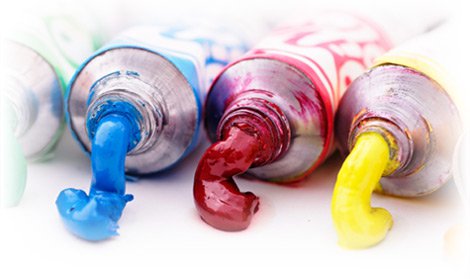
![]() The Artist Brushes
The Artist Brushes
Our master artists use a wide array of brushes to accomplish their goal of painting the perfect masterpiece for our customers. We insist that our artists use only the highest quality artist brushes, which are always finely balanced for maximum stroke control. Professional artist brushes are made from a variety of fibers to create different effects. In addition, brush heads are available in almost a limitless selection of sizes and shapes, each ensuring our artists will achieve their desired results.
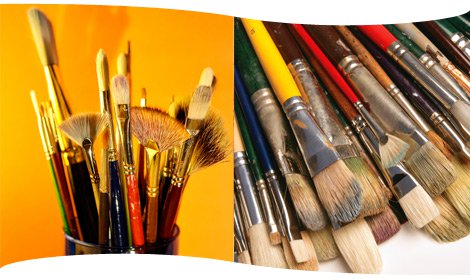
![]() The Artist Palette
The Artist Palette
All of the oil paints our artists utilize come together on the artist palette. The artist palette is commonly constructed of very thin wood, designed to be held in the artist’s hand while resting on the arm of the artist. In addition to the wood palette, our artists may also use a flat tray that is conveniently located just below the canvas that is being painted. This tray serves a dual purpose as the palette for the oil paints and also a convenient surface to have all the artist brushes close at hand. The artist palette is the surface where all the oil paints are mixed together to achieve the desired colors needed by the artist to complete each masterpiece.
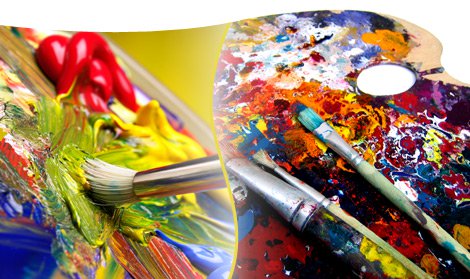
![]() The Canvas
The Canvas
Our artists use canvas that is made from high quality, 100% cotton fabric. Cotton canvas is the preferred choice for our artists, because it is a very durable fabric for oil painting. The fine woven cotton canvas is coated with acid-free titanium gesso, which ensures long term life for our museum quality oil paintings. The 100% cotton canvas has both excellent fiber strength for stretching and is also woven to rigid specifications to meet the strict requirements of our master artists.
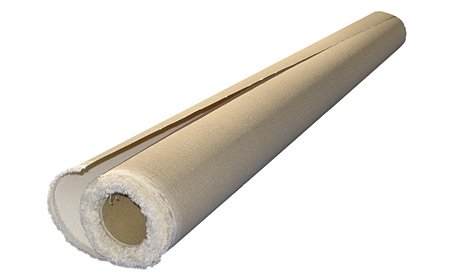
![]() Our Artists at Work
Our Artists at Work
The painting process involves many intricate steps our artists must complete in order to paint each oil painting. Our stringent quality control and high standards of excellence ensures that our artists strictly adhere to our philosophy that every oil painting must be painted with the utmost attention to detail, aesthetics, technique and style. At iPaintings, we want you to buy with confidence, knowing that you have purchased the finest quality oil paintings.
STEP 1… The blank canvas is cut to size and tacked onto an easel.
Here the blank canvas has been cut to the required size of the oil painting and tacked onto the artist’s easel. The canvas is intentionally cut an extra 1.5 inches on all sides to allow the canvas to be stretched by a framer onto wood stretcher bars, as part of the framing process. For example, if you order an oil painting in a 24” x 36” size, the actual painted surface of the canvas is 24” x 36”, but the overall canvas size is approximately 27” x 39”. As you will see depicted in the series of photos shown below, there is an approximate 1.5 inch unpainted border all around the oil painting.
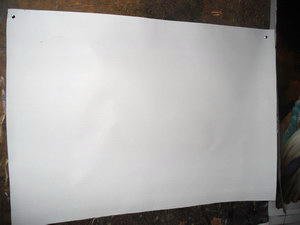
STEP 2… Our artist sketches an outline of the oil painting.
The painting process starts out with our artist sketching an outline of the oil painting prior to applying any oil paints to the canvas. Here is where our artist can concentrate on sketching the rough composition of the subject matter, paying special attention to the proper scale of the various shapes and figures that will comprise the finished oil painting. Our artists utilize an assortment of specially designed charcoal pencils to complete the sketch layout.
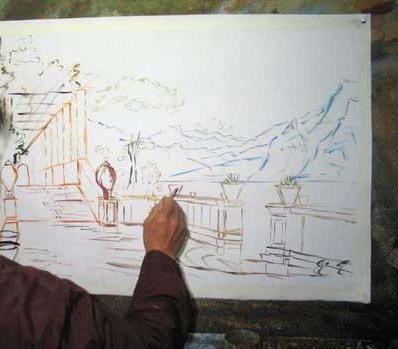
STEP 3… Our artist applies the first coat of paint to the canvas.
Here our artist is using a fairly wide artist brush to apply the first coat of paint to the canvas. The first layer of oil paint or “undercoat” is painted to cover the white gesso of the canvas, while also acting to “tone” the canvas. In this step of the painting process, our artist will generally concentrate on the initial application of color, focusing on the most distant background, and then working slowly towards the foreground elements, all the time following the outline sketched on the canvas.
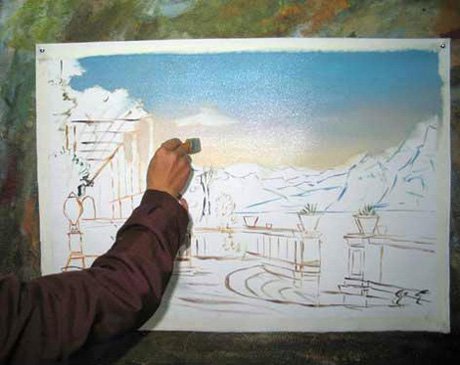
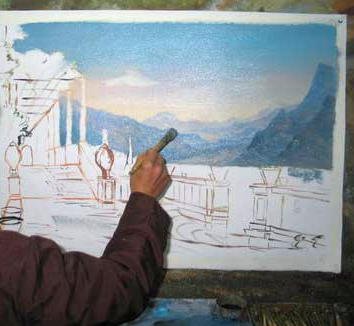
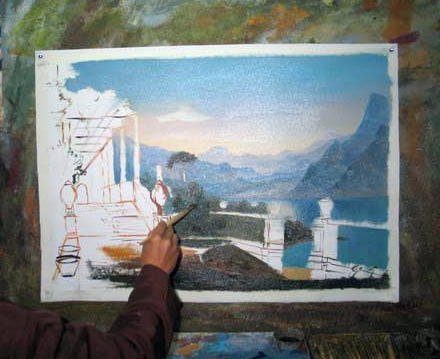
STEP 4… Our artist paints the shapes and forms in the oil painting.
Here our artist will continue to paint the remaining areas of the oil painting with the undercoat of oil paint, while also concentrating on painting the various shapes and forms in the oil painting. Colors are carefully mixed and applied to the canvas by our artist in varying hue intensities in order to achieve the desired depth perspective and color requirements. Before proceeding to the next step, this layer of paint must be allowed to dry.
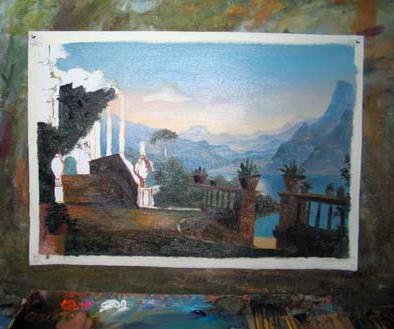
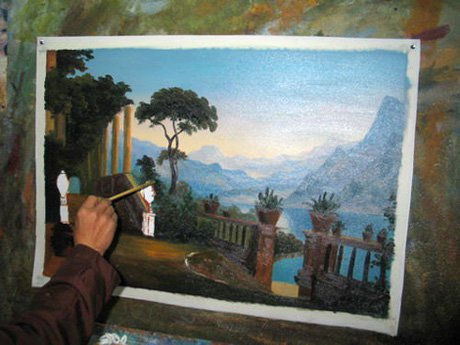
STEP 5…Our artist is ready to add textures to the oil painting.
Here our artist is utilizing various artistic techniques to add texture to the oil painting, all the time focusing on the necessary consistency and thickness of the oil paints that will start to give the oil painting its unique character. The deft use of various shape artist brushes and the application of more or less paint on the brush, allows our artist to accomplish the task of adding texture to the oil painting.
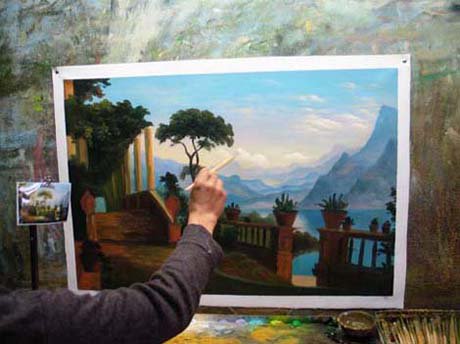
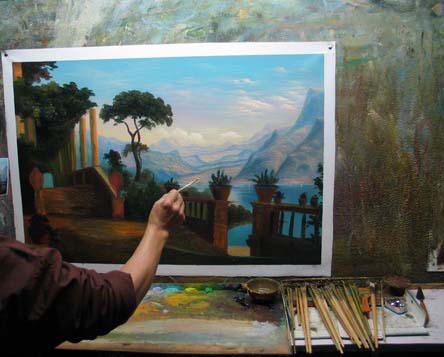
STEP 6… Our artist is now painting the artistic details.
An oil painting is not a masterpiece until all the artistic details are incorporated into the oil painting. Every small detail, such as shadows, highlights, shading and color prominence are all vital elements that must be addressed in this step.
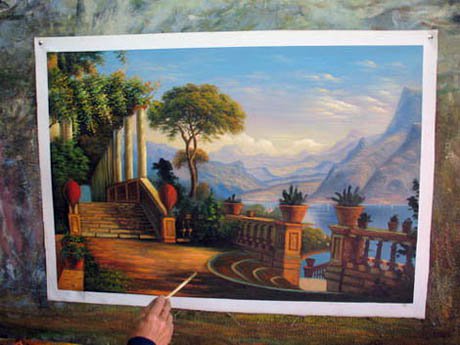
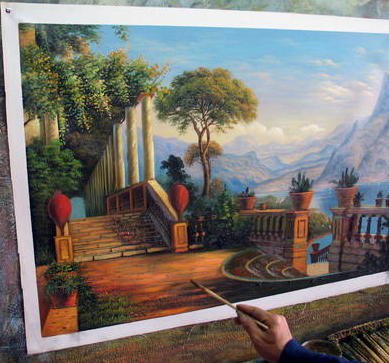
STEP 7… Our artist is ready to paint the finishing touches.
Any remaining details necessary to complete the oil painting are addressed at this time. The artist will closely examine the oil painting to determine if all the artistic finishing touches have been painted.
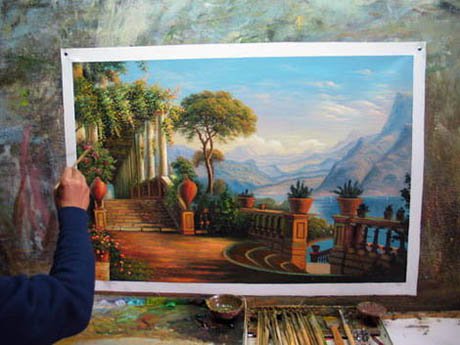
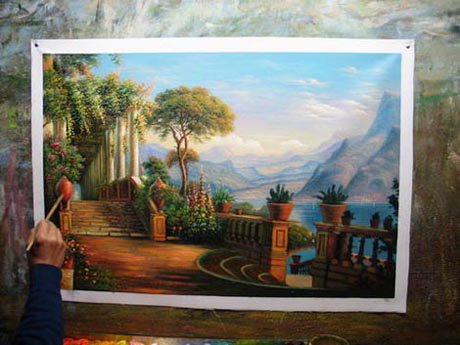
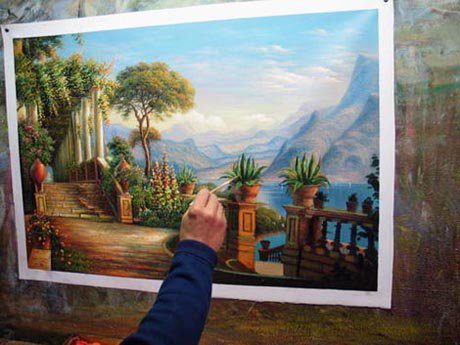
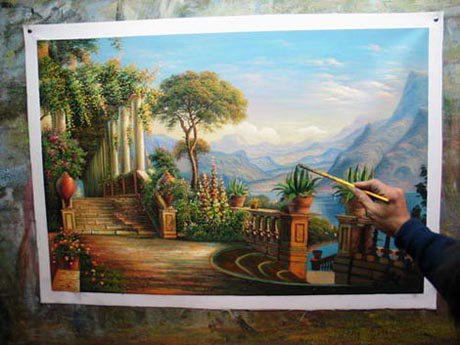
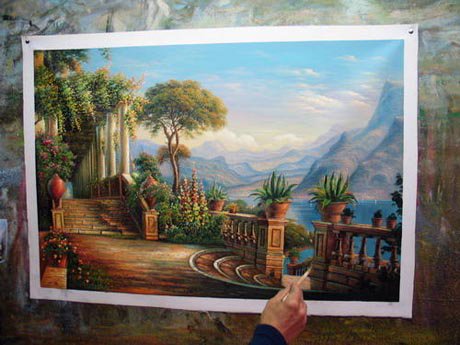
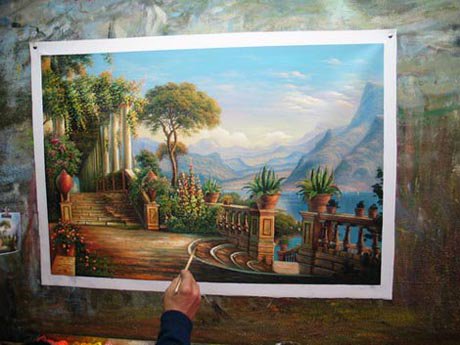
STEP 8… The oil painting is now a masterpiece!
After our artist is satisfied with the completed oil painting, a highly accomplished senior artist will be called in to offer a professional opinion and render the final approval. Only then will this oil painting be called a true masterpiece.
